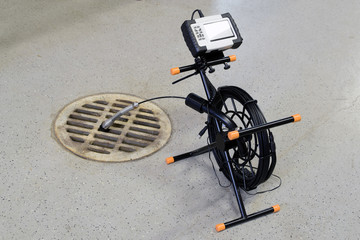In some cases, you may need to call an emergency Plumbers Aurora CO. These plumbers are available 24/7 and can help you with a variety of problems. They can also help you prevent future emergencies.
But how do you know when it’s an emergency? In this article, we’ll look at some of the most common reasons to call a plumber.
Clogged drains are one of the most common plumbing problems. Whether it’s the kitchen sink, bathtub, or shower, a clogged drain can cause water to back up and even damage your home’s pipes. It’s important to learn how to spot a clogged drain in order to avoid the need for emergency plumbing services.
A clogged drain is usually the result of food, hair, soap scum, or other debris that has accumulated inside your home’s drain pipe. It’s important to take precautions when washing dishes and cleaning the kitchen sink so that these materials do not wash down the drain. In most cases, a clogged drain can be easily resolved by plunging or using a drain auger to break up the blockage.
However, some clogs are more severe than others and may require an emergency plumber to repair them. Signs of a clogged drain include gurgling sounds in your toilet or backed-up water or sewage in your home’s bathroom, kitchen, or shower. Backed-up water or sewage can also affect other areas of your home, such as basements and downstairs bathrooms.
Most clogs are caused by hair, animal fur, and dental floss. These substances can knot up and combine with other items in the drain, such as soap scum, and they can also attach to parts of your pipes. It’s a good idea to set up a compost bin for these types of waste and to regularly clear your drains with a plunger or drain snake.
Other causes of clogged drains include paper towels, tampons, and other toilet-related objects. It is also a common problem in homes with hard water, as these minerals build up and block your drains. A water softener is a good solution to this issue, but you should call a professional for help if the drain has backed up into other areas of your home.
When a drain becomes completely blocked, you will need to use a power auger. To use a power auger, plug it in and position it near the blocked drain. Press the foot-pedal switch to activate the motor and feed a few feet of cable down the drain. After a few feet, the cable will grab onto the clog and pull it up into the unit. Repeat this process until the clog is fully removed.
Leaking Pipes
A leaking pipe is a big problem, particularly if it’s hidden behind walls or under floors. Not only does it waste water, but over time it can damage the structure of your home and encourage the growth of mold and mildew. If you have a leaky pipe, you’ll need to act fast to minimize damage and avoid costly repairs.
Some leaks are obvious, like a dripping faucet or a pool of water under your sink. However, other pipes may be leaking behind walls or under the floor, and you might not even know it. A high water bill, a musty smell around drains, or even just a drop in water pressure could indicate a hidden leak in your home’s plumbing system.
There are several things you can do to help prevent and fix a leaking pipe. One is to use a rubber patch with adjustable pipe clamps to temporarily seal the leak. These are available at most hardware stores. Be sure to select a patch that is the same size as your pipe and to tighten the clamps securely. Another option is to purchase a slip coupling that will fit your pipe and seal it tightly. These are easy to install and provide a permanent solution for your leaky pipe.
If the leak is severe, you’ll need to shut off the water to your house. If possible, locate the main valve and turn it off; if not, you can try to shut off the water to individual appliances. You should also turn off the electricity if it’s running near where the leak is occurring to prevent electrocution. Once the water is turned off, you can take steps to contain the leak and protect your home until a plumber arrives.
Some leaks are caused by faulty joints, which can be tricky to repair without the help of a professional plumber. These are often soldered joints, and sometimes the solder can come loose over time. You can try to tighten the joint by applying some plumber’s tape, which is sticky and can form a temporary seal.
Blocked Toilet
If your toilet is constantly clogging, it could be due to a blockage in the main sewer line. This is a serious issue that requires professional help from your plumber, but you can attempt to clear the drain before calling them. First, turn off the water supply by turning the valve behind your toilet. This will prevent water from flowing into the bathroom while you work on the problem.
Most of the time, a blocked toilet is caused by improper items being flushed down the drain, such as baby wipes or paper towels. If this is the case, you can try using a non-toxic DIY declogger to break up the clog and clear the pipe.
Fill a pot with hot water and pour it into your toilet, making sure to use the highest temperature possible (around 140 degrees Fahrenheit). This will soften and loosen any material in the clog, so you can remove it with a plunger. Once the water is cooled, give your toilet a few flushes to see if it has cleared the blockage.
If plunging your toilet doesn’t work, you can try using a commercial enzyme cleaner to dissolve the clog and clear the drain. Make sure to wear rubber gloves to avoid getting caustic chemicals on your hands.
For more stubborn clogs, you can try fishing the clog out of the toilet with a wire hanger. Unwind the hook end and feed it into the toilet drain until you feel it hit an obstruction. This will usually take a bit of patience and may require you to rewind and try again. If this doesn’t work, you can use a toilet auger to bust up the clog and clear the blockage.
If you have tried everything and can’t find the source of your clog, it’s time to call in a professional plumber. Depending on the location of your clog, you might be able to dislodge it with a simple drain snake, or you may need to remove your toilet and manually dismantle the plumbing system. This is a job best left to a plumber who has the right tools and experience for the task.


